Blaze Resort [Korea Quality]블라제 리조트[한국관광 품질인증]
18.7Km 2024-08-14
274 , Noksan-ro, Seogwipo-si, Jeju-do
+82-64-787-2588
Blaze Resort is a private pension in Pyoseon-myeon, Jeju. It stands on Noksang-ro, a road which is famous for its beautiful springtime display of canola flowers and cherry blossom. The nearby forest trail, doldam dry stone walls, and local oreum (low volcanic hill) make picturesque photo backdrops, and are often used for wedding photo-shoots. Rooms in the pension range from 2-person to 4-person, so groups can be accommodated. There are also swings, slides and flower garden trails around the pension, a restaurant for group meals, and a large auditorium.
Changkkom (창꼼)
18.8Km 2024-10-15
15 Bukchon 15-gil, Jocheon-eup, Jeju-si, Jeju-do
Changkkom is a unique rock formation with a window-shaped hole, popular among tourists for taking photos.
Jeju Horse Park (조랑말체험공원)
19.1Km 2024-01-11
381-15 Noksan-ro, Seogwipo-si, Jeju-do
Jeju Horse Park offers a venue to promote Jeju’s horse culture in an easy and fun way. The park has kept intact the 600-year history of nomadic culture at the site of Gasi-ri Village which used to house Gammajang, the place for raising the best horses during the Joseon dynasty. The park includes the Jeju Horse Museum, Ttarabi horseback riding track, Maeum Cafe, Mongol Yurt Guesthouse, camping site, Art Shop, and an experience place to focus on the Project for a New Cultural Space Creation through the support of the Ministry of Agriculture, Food and Rural Affairs. The Jeju Horse Museum was the first national museum created by a village and its main theme covers the history and culture of the village. It is also regarded as a new form of community business model.
Jeju Canola Flower Festival (서귀포유채꽃축제)
19.1Km 2025-03-25
381-17 Noksan-ro, Seogwipo-si, Jeju-do
+82-64-760-3942
The Jeju Canola Flower Festival is one of the most famous festivals in Jeju, bringing news of spring arrival with fields upon fields of bright yellow flowers. Large numbers of visitors come to the festival every year to take in this beauty. In addition to enjoying the vibrant landscape, visitors can participate in a variety of festival events that showcase the unique spirit of Jeju Island.
Dolhareubang Museum (돌하르방미술관)
19.2Km 2024-03-12
70 Bukchonseo 1-gil, Jocheon-eup, Jeju-si, Jeju-do
+82-64-782-0570
Dolhareubang Museum is an outdoor art gallery that exhibits 48 original dolhareubang sculptures recreated by artists native to Jeju Island. Visitors can enjoy the artworks while strolling through the Gotjawal in Jeju. Along the forest path, there are various interpretations of dolhareubang, such as dolhareubang practicing yoga and dolhareubang throwing hearts, providing a fresh perspective on these iconic stone statues.
Haenyeo’s Kitchen Bukchon Branch (해녀의부엌 북촌점)
19.2Km 2024-01-09
31 Bukchon 9-gil, Jocheon-eup, Jeju-si, Jeju-do
Haenyeo’s Kitchen Bukchon Branch was renovated from a fishing village warehouse and is a unique restaurant where visitors can enjoy meals while appreciating the media art in a 360-degree panorama. Only 14 people are invited to a table of dishes carefully prepared by 12 artists to taste a course meal of seafood collected by haenyeo (female divers who collect seafood). While dining, the customers are entertained with media art and a storytelling by a docent that depicts the life of haenyeo divers and their village. The four-course lunch lasts 80 minutes, and the seven-course dinner lasts 120 minutes. Unique dishes, such as shindari, the fermented beverage; sangwetteok, Jeju’s traditional rice cake; uyeongpat with bracken and bean sprouts; Nangpun Set Menu comprised of top shells, red tilefish, seafood wraps, steamed pork slices, vegetables, and other side dishes; omegi rice cakes, become special memories of the trip in itself. Admission is available for those aged 6 or older, and reservations are required.
Namokdo Sikdang (나목도식당)
19.4Km 2021-03-24
60, Gasi-ro 613beon-gil, Seogwipo-si, Jeju-do
+82-64-787-1202
This is a restaurant of Duruchigi (Korean stir-fried pork) that is frequently visited by locals in Jeju. This Korean dishes restaurant is located in Seogwipo-si, Jeju-do. The representative menu is stir-fried pork.
Seogwipo Gasiri Village (Noksan-ro Canola Flower Road) (서귀포 가시리마을 (녹산로 유채꽃도로))
19.5Km 2024-01-09
20 Gasi-ro 565beon-gil, Pyoseon-myeon, Seogwipo-si, Jeju-do
Seogwipo Gasiri Village is where canola flowers and cherry blossoms bloom simultaneously over a 10-kiliometer section from its access road every April, boasting a picturesque driving route. The combination of yellow canola flowers and light pink cherry blossoms is very special. Selected as one of the “100 Beautiful Roads in Korea,” Gasiri Noksan-ro Road is a road that passes through Noksanjang and Gammajang, which were the best horse farms of the Joseon period, and is currently one of the best canola flower roads in Jeju. As such, it is called the "First Sight of the Ten Sights of Gasiri Village." In addition, visitors can enjoy beautiful natural scenery unique to Jeju, such as Ttarabioreum and Keunsaseumioreum Parastic Cones.
Pyoseon Haevich Beach (표선 해비치 해변)
19.6Km 2025-01-08
Minsokhaean-ro, Seogwipo-si, Jeju-do
+82-64-740-6000
Pyoseon Beach in Seogwipo is a spacious beach, taking up more than 150,000 m². During low tide, the beach looks like an elegant circle, and it becomes a circular lake less than 1 meter deep during high tide, and displays many different colors. The beach is a great place for children to play and for watching the sunrise. The sand on the beach is formed out of broken shells, and sand baths are believed to be effective for people suffering from neuralgia. Every August, this beautiful beach hosts the Pyoseon White Sand Festival, which offers fun and colorful events. The beach is equipped with excellent amenities (a campground, abundant parking space, dressing rooms and shower rooms) and surrounded by nearby attractions, such as Seongeup Folk Village and Jeju Folk Village Museum.
Sangumburi Crater (산굼부리)
19.6Km 2024-11-28
768 Bijarim-ro, Jeju-si, Jeju-do
+82-64-783-9900
Sangumburi Crater has been designated as a Natural Monument. It is located on the southeast side of Jeju, and is a flat crater, about 650 meters wide, 100 meters deep, and 2,070 meters in circumference. If you look at the crater from above up, it looks like a man-made circular stadium. There is a variety of plant-life in the crater. On the north side, Nandaeseong vegetation such as red-thorn trees, and magnolia trees grow, along with the rare winter strawberries. On the south side of the crater, Ondaerim vegetation such as evergreens, maples, and mountain strawberry trees cover the area. Because so many different kinds of trees and plants grow in such a limited space, it attracts the attention of researchers as well.
![Blaze Resort [Korea Quality]블라제 리조트[한국관광 품질인증]](http://tong.visitkorea.or.kr/cms/resource/19/2949019_image2_1.jpg)
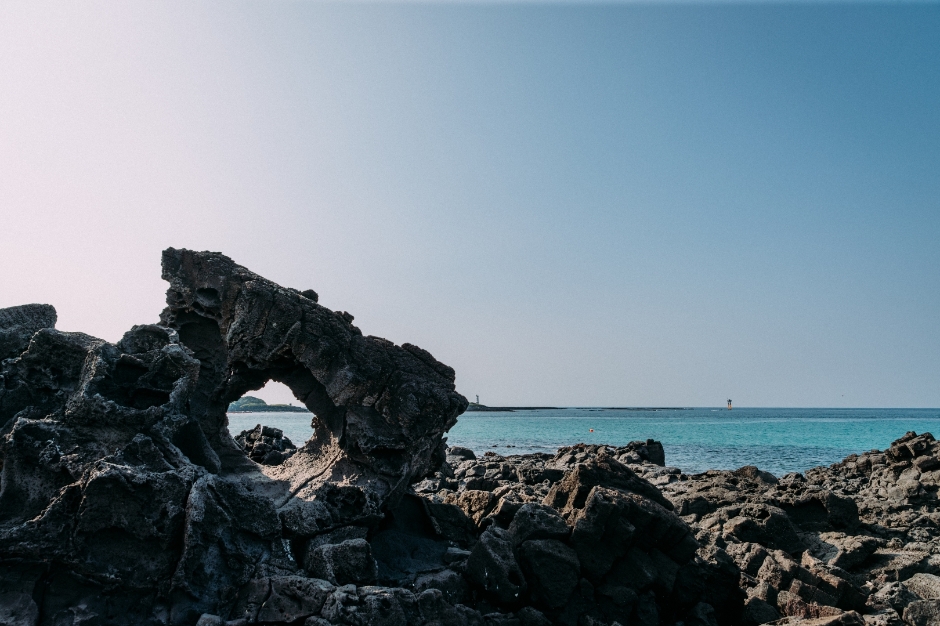
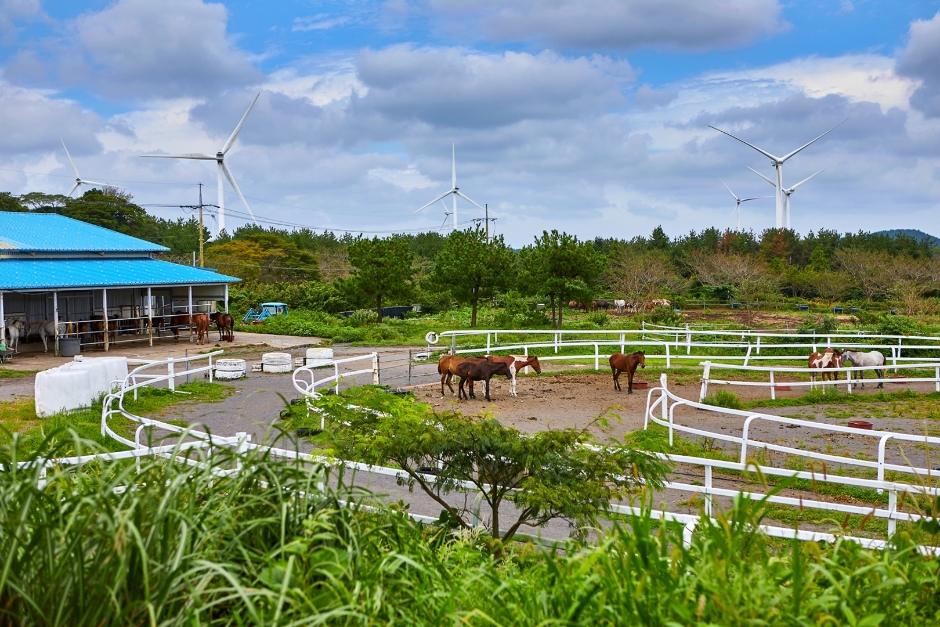
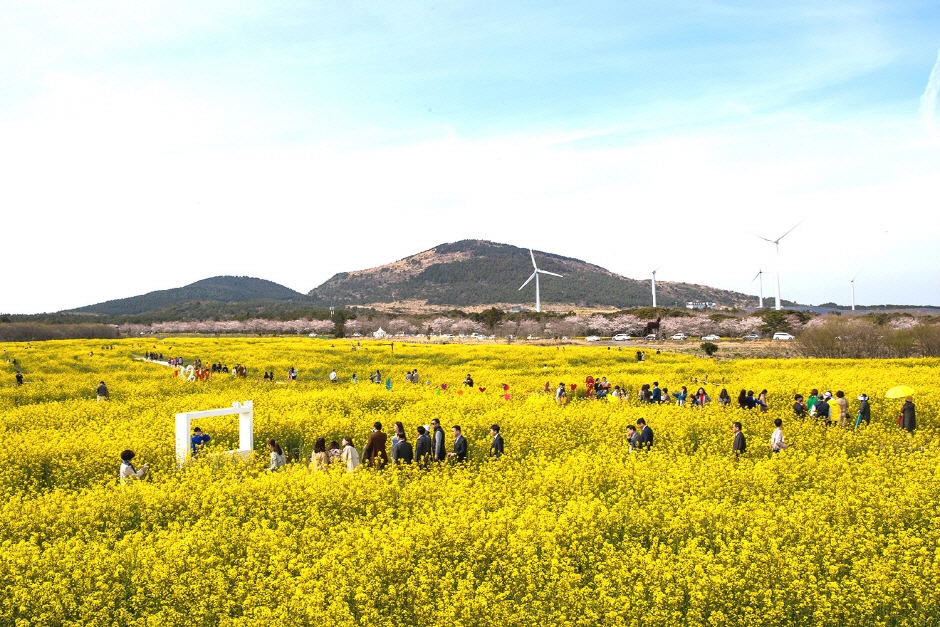
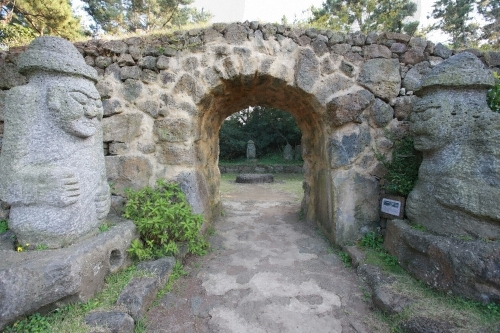
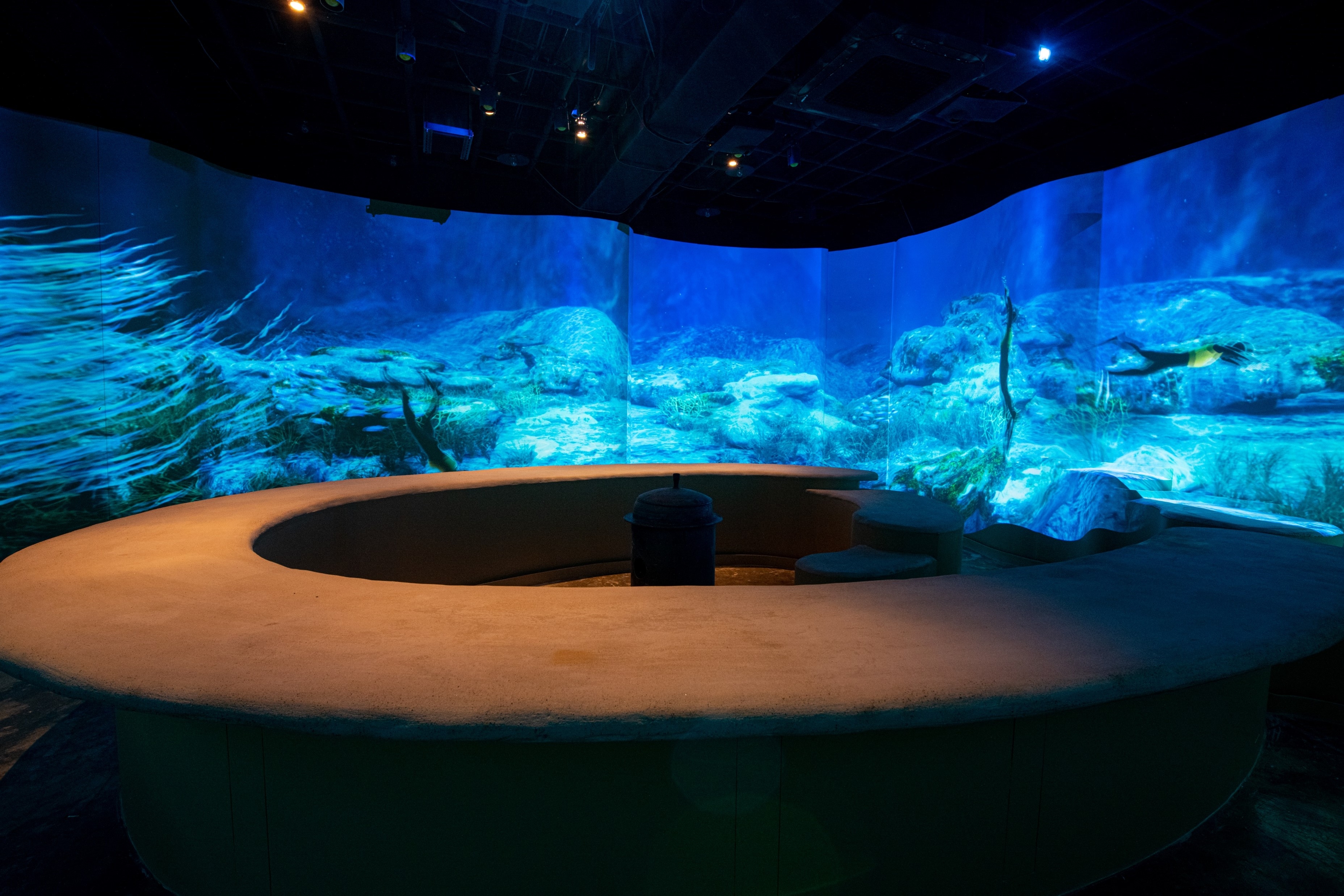
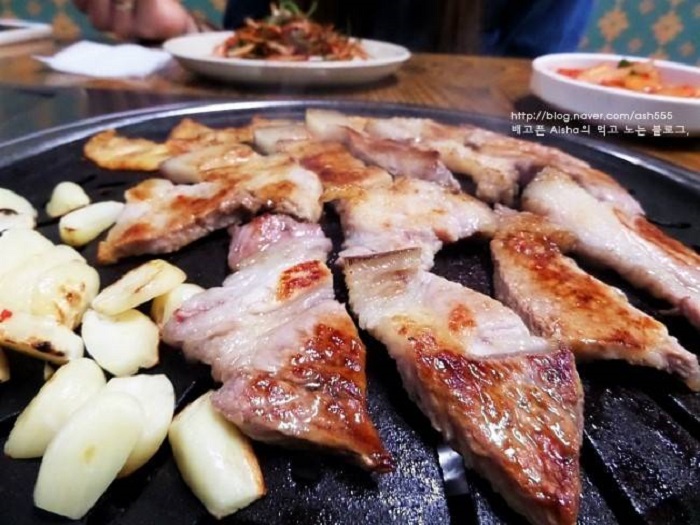
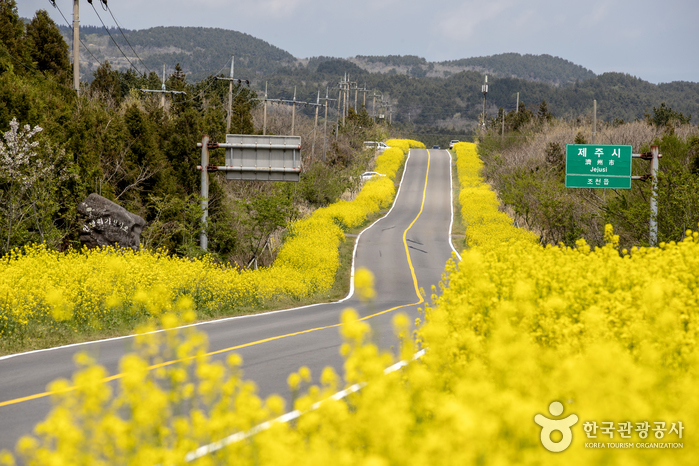
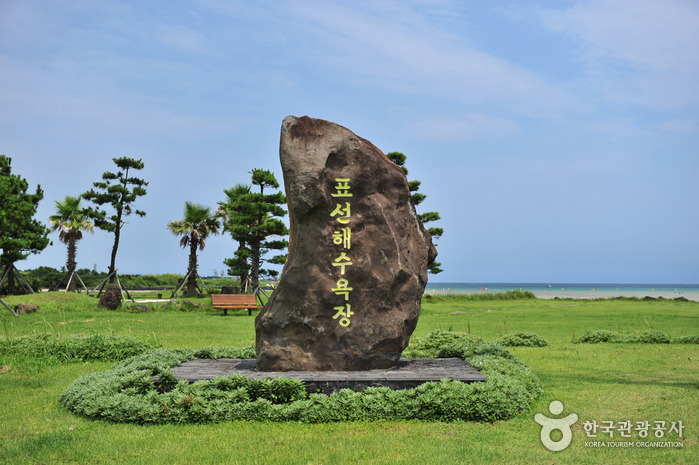
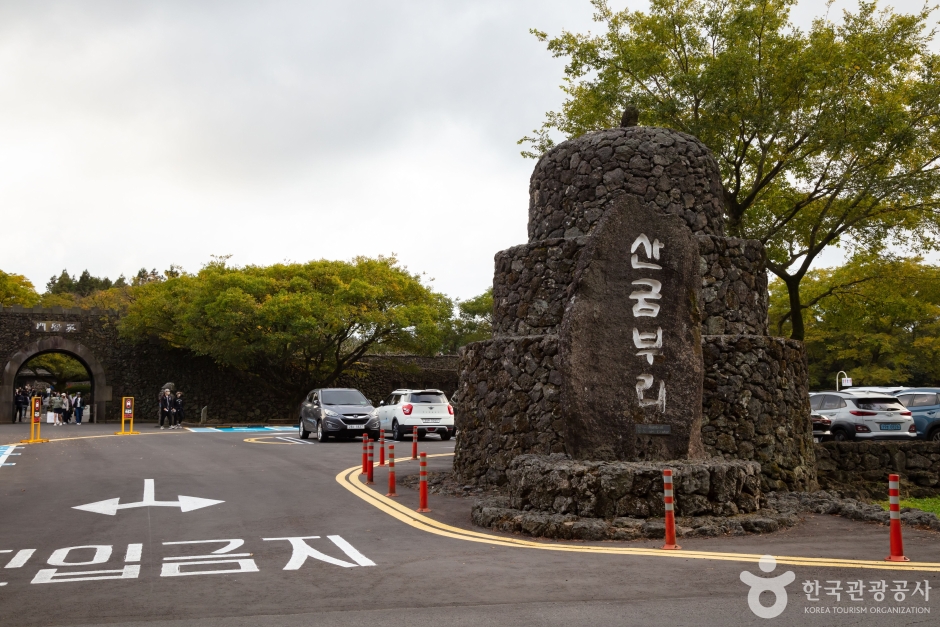
 English
English
 한국어
한국어 日本語
日本語 中文(简体)
中文(简体) Deutsch
Deutsch Français
Français Español
Español Русский
Русский